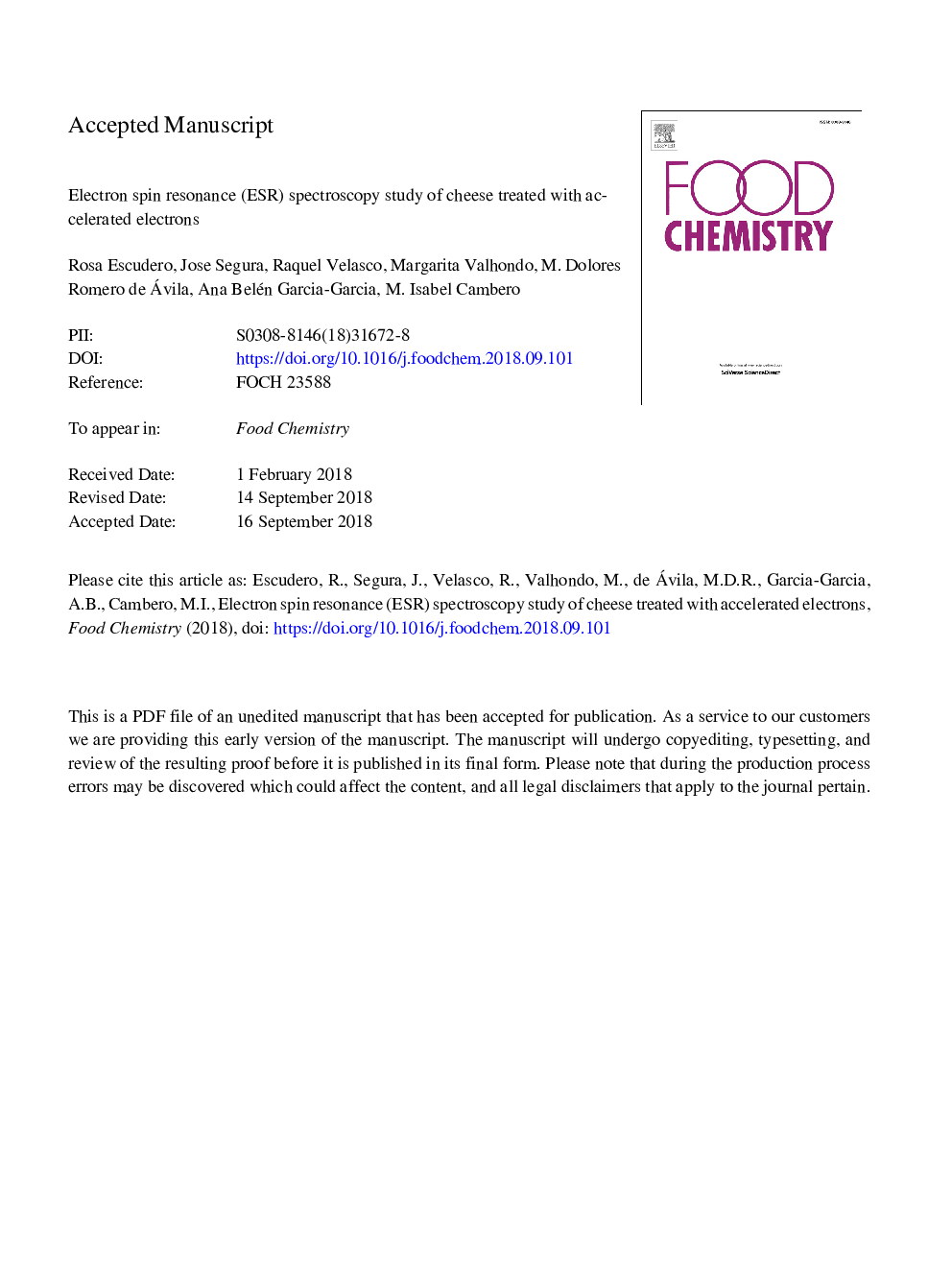| Article ID | Journal | Published Year | Pages | File Type |
|---|---|---|---|---|
| 11011798 | Food Chemistry | 2019 | 28 Pages |
Abstract
The generation, accumulation and decay of free radicals in six varieties of cheese, irradiated (0-4â¯kGy) in an electron accelerator, have been studied by electron spin resonance (ESR) spectroscopy. Remarkably, the ESR spectra of all untreated cheeses showed only one singlet signal with a g-factor of 2.0064â¯Â±â¯0.0005. Surprisingly, the ESR spectra of irradiated samples presented a new signal with g-factor of 2.0037â¯Â±â¯0.0003 which was independent of the type of cheese, and which might be due to free radicals from the radiolysis of proteins. Surface regression models (Pâ¯<â¯0.0001) established the relationship among signal intensity, absorbed dose (0, 1, 2 and 4â¯kGy) and storage time (0-180â¯days) for the different types of cheese. Results suggested that the analysis by ESR (or electron paramagnetic resonance, EPR) is suitable to evaluate, either qualitatively or quantitatively, the irradiation treatment of different types of cheese.
Related Topics
Physical Sciences and Engineering
Chemistry
Analytical Chemistry
Authors
Rosa Escudero, Jose Segura, Raquel Velasco, Margarita Valhondo, M. Dolores Romero de Ávila, Ana Belén Garcia-Garcia, M. Isabel Cambero,
